Nitrate is used to fertilize vegetables, flowers, trees and shrubs. It improves yield and improves fruit quality. Unlike other nitrogen-containing fertilizers, calcium nitrate does not affect the level of soil acidity, so it can be used on any type of soil.
Content
Calcium, potassium and ammonium nitrate for cucumbers
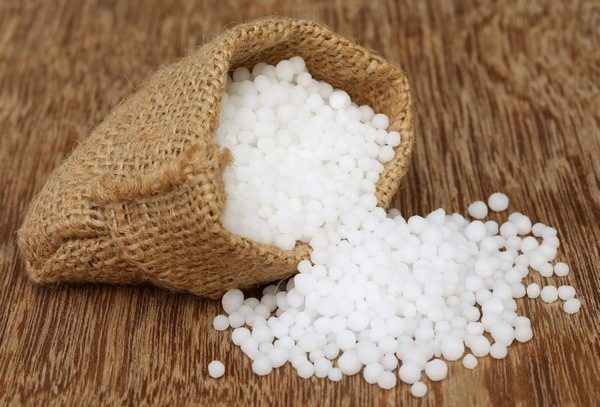 Ammonium nitrate is found in different variations: nitrate, which acts very quickly and slower - ammonium. Unlike most fertilizing, it works even in unheated soil, so it can be used even for the earliest crops. Nitrogen in the form of ammonium is suitable for a longer period of plant growth, since it is consumed slowly. Most often found in the form of fertilizer is nitrogen sulfate or ammonium nitrate B.
Ammonium nitrate is found in different variations: nitrate, which acts very quickly and slower - ammonium. Unlike most fertilizing, it works even in unheated soil, so it can be used even for the earliest crops. Nitrogen in the form of ammonium is suitable for a longer period of plant growth, since it is consumed slowly. Most often found in the form of fertilizer is nitrogen sulfate or ammonium nitrate B.
Nitrogen sulfate is a combination of nitrogen and sulfur, which can be produced in different proportions. The nitrogen content ranges from 25% to 32%, and sulfur from 2.9 to 15%. It occurs in the form of granules of brown or sand color. Elements are well soluble in water, improve the absorption of other beneficial minerals by plants.
Ammonium nitrate B contains exclusively nitrogen and leads among analogues in efficiency. Available in granules or powder of a light shade. Color varies with additives: may be slightly yellow or pinkish. The proportion of active substance is more than 34%.
Calcium nitrate is a more delicate and safer fertilizer. It contains not only nitrogen in the form of nitrate, but also calcium, up to 19%. It occurs most often in granules or crystals of a light shade. Water-soluble fertilizer, can be stored for a long time in a sealed container. In contrast to other top dressings with a nitrogen content, calcium nitrate does not affect the level of acidity in the soil. It is most effective to apply it on sod-podzolic soils.
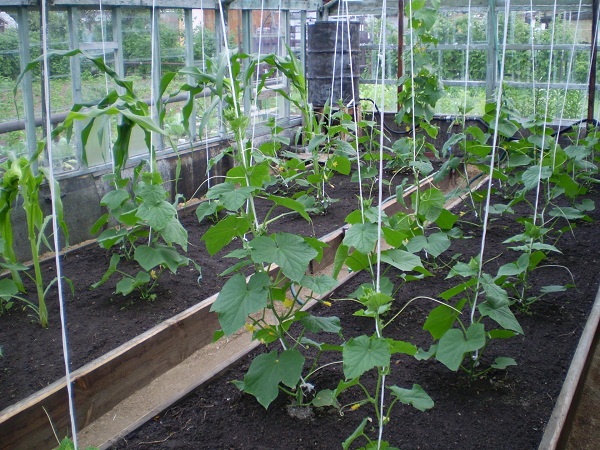 You may be interested in:
You may be interested in:Potassium nitrate contains only 13% nitrogen and a significant proportion of potassium: over 40%. This ratio is better than other feeding, contributes to the formation and growth of fruits, therefore, is actively used in the middle of the growing season. Also, this type of nitrate normalizes photosynthesis and strengthens the immune system.
Advantages and disadvantages
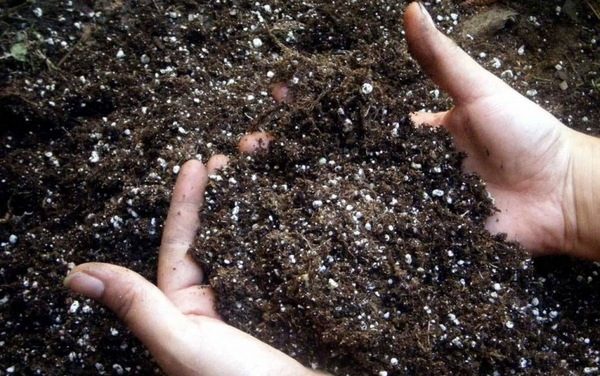 Feeding cucumbers with nitrate helps to improve the quality of fruits, accelerate growth, strengthen immunity, making crops resistant to diseases and temperature extremes. Most often, calcium nitrate is used, since this species is the safest for humans and is best suited for cucumbers.
Feeding cucumbers with nitrate helps to improve the quality of fruits, accelerate growth, strengthen immunity, making crops resistant to diseases and temperature extremes. Most often, calcium nitrate is used, since this species is the safest for humans and is best suited for cucumbers.
Use of such fertilizer:
- improves metabolic processes and photosynthesis;
- strengthens cell walls;
- accelerates the development of green mass;
- makes the roots stronger;
- increases plant immunity and resistance to bacteria fungi;
- allows you to better tolerate temperature changes;
- increases productivity.
Calcium nitrate is suitable for all types of soil, even with high acidity. Unlike other types of nitrate, it does not acidify the soil even more. There will be no negative consequences from this fertilizer if applied correctly, observing the dosage.Excessive use can damage the root system.
Ammonium nitrate is less commonly used because it has more flaws. It is explosive, acidifies the soil and is not suitable for gourds. Most cucumbers ripen quickly, and minerals are absorbed slowly and a cumulative effect is formed. As a result, nitrates accumulate in the fruits, causing harm to health. It is possible to feed only at the first stages, before the appearance of the crop. It is better to use not a solution, but granules in a dry form, digging to a depth of 10 centimeters into the soil. Watering burns the stems, damaging the plants. Many choose this fertilizer because of the low price, but it is better to spend more and save crops.
Feeding cucumbers with calcium nitrate
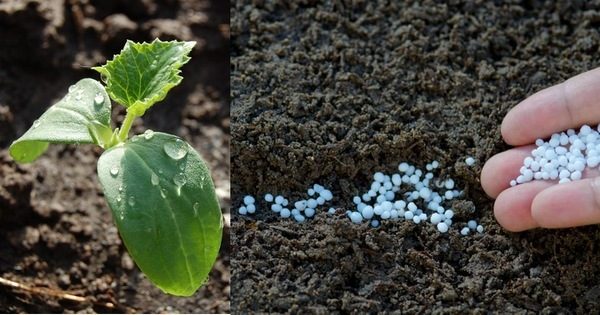
This fertilizer cannot be combined with straw, sawdust and manure, as well as chalk andphosphate-based top dressing. Such a union may result in fire. But with wood ash or urea, you can combine without fear: useful properties in this case only increase. Feeding with nitrate is carried out at several stages:
- Before boarding. Granules are applied in dry form without diluting with water, otherwise useful substances can be washed out of the soil. At the planting site of each bush, 8-10 grams of substance are poured. Granules are mixed with the ground to evenly distribute the active substance in the soil.
- During the growth period, the fertilizer is used in liquid form. Most often, a weak solution is used: 20 grams per 10-liter bucket of water. Pour dressing under the root, each plant takes a liter.
- The third time fertilizer can be applied when the fruits are formed. It is best to use the foliar method by spraying bushes from a spray bottle. After the cucumbers begin to grow actively, it is better to stop complementary foods in order to avoid the accumulation of substances.
Thanks to saltpeter, the green part of the plant is better formed, the cell walls, the roots of the plant are strengthened. Spring fertilization of the soil will speed up the breakdown and assimilation of substances in the soil: plant seeds will germinate faster. Therefore, it is better to apply fertilizer on well-heated soil or in a greenhouse.
Foliar top dressing can be used in the initial stages. After transplanting seedlings into the ground, you need to feed cucumbers three more times. The first time you can water the plants after the second pair of leaves has appeared. For safety, the dose should be small: 1.5 tablespoons per 10 liters of pure water. With plant growth, the dose is gradually doubled. The second time you can fertilize cucumbers two weeks later, the third - four after the second.
Spraying allows you to spend the product more economically, accelerates its action, allows you to isolate calcium nitrate from other substances that the plant receives from the soil. Getting on the leaves, the fertilizer is absorbed faster and begins to act earlier than when applied to the soil. The danger lies in concentration: too much substance can cause burns, especially when in contact with the sun.
The main indications for use are a lack of calcium and nitrogen. Deficiency of substances can be noticed by the following signs:
- the formation of bright spots on the leaves;
- increasing fragility of stems and cucumber lashes;
- the occurrence of rot and affected areas;
- change in the shape of leaves, twisting;
- weakening of the root system;
- the appearance of yellowness on the stems and leaves;
- pointed tips of the fruit;
- smaller than usual cucumbers.
Fertilizers often enrich the soil in the greenhouse: there it is more in need of healthy minerals. Saltpeter can be used in closed form in liquid form - due to the lack of precipitation, substances are not washed out of the soil. You need to be careful with heated rooms: contact of the fertilizer with a heat source can cause an explosive reaction. For the same reason, it is not recommended to use fertilizers in heat and sunny weather.
The manufacture of calcium nitrate
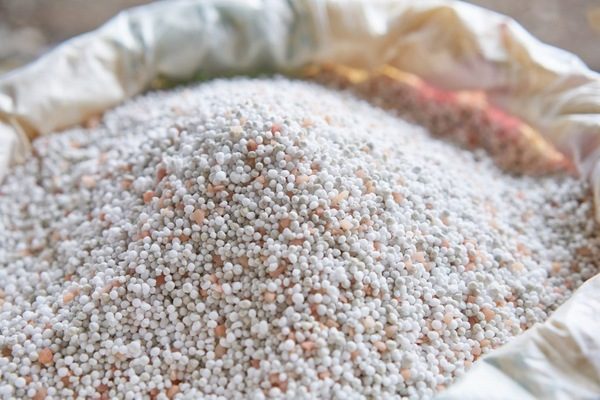
You can prepare the fertilizer at home from ammonium nitrate, which contains the main components. To do this, you need to combine it with slaked lime. You need to do this on fire, so you need bricks and firewood for the fire. The reaction is best done in an aluminum pan. Cooking is better on a free area away from residential buildings: the reaction is accompanied by an unpleasant odor.
Build a bonfire and lay bricks on top at a sufficient distance so that an aluminum container can fit in. Fill the pan with water and add saltpeter. For 300 grams, you need half a liter of liquid. Bring the mixture on the fire to a boil, and then carefully pour lime. Do it slowly and in small portions. Each time, wait until the mixture becomes homogeneous again. The entire solution will need about 140 grams of active substance.
Boil the composition until the unpleasant odor disappears. Leave to cool to form a precipitate from unused lime. It can be disposed of, but the solution should be carefully drained: this is calcium nitrate in a concentrated liquid form. For fertilizer, you need to dilute the resulting substance in a ratio of 1 to 10 and use it for watering and spraying plants.
Storage and safety
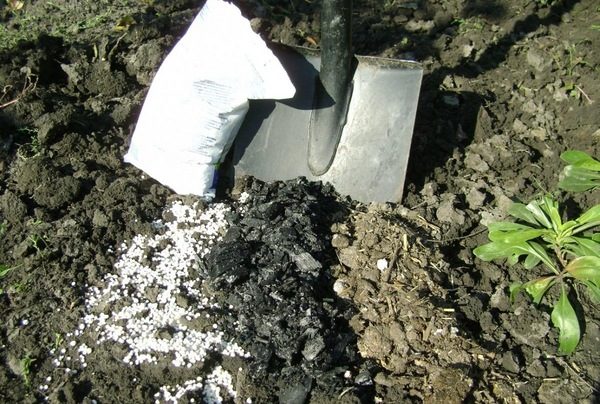
The main danger: ignition. It can occur at high temperature or in contact with substances that cause a fire. Therefore, it is best to store supplies in dark, dry rooms, tightly packed in airtight containers. Optimum packaging: polyethylene or paper, the main thing is to monitor the integrity of the packaging. Protect the fertilizer from heat and direct contact with the sun: this can cause an explosive reaction.
Another problem: the accumulation of nitrates. Gourds more actively than others accumulate them in the cells, so the application must be completed at the stage of formation of the fruit. It is also not recommended to use nitrate in combination with organic fertilizers: this will lead to an increase in the acidity of the soil.
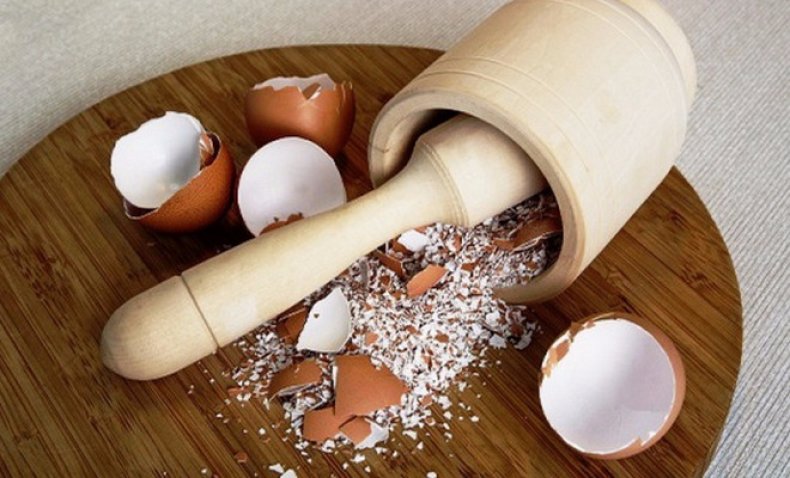 You may be interested in:
You may be interested in:When working, you must follow the basic safety precautions:
- Mix solutions away from living quarters.
- Wear protective equipment: mask, respirator, goggles, gloves.
- Do not exceed the recommended concentration of the substance so as not to burn the skin and plants.
- Water dosed without affecting the stems and leaves: they can only be sprayed with a light solution.
- If the solution gets on the skin or mucous membranes, wash the affected area and consult a doctor.
It is better not to use ammonium nitrate for cucumbers: it is more active, causes the accumulation of nitrates in melons and can damage delicate stems and leaves. It can be neutralized by preparing calcium nitrate from it. The resulting concentrate must be diluted and used for watering and spraying crops.
Reviews
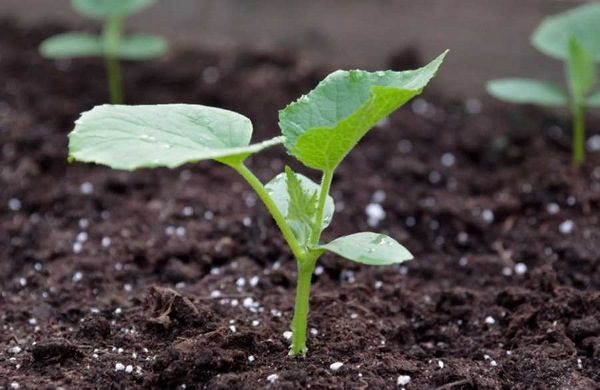
Ivan, 46
I like calcium nitrate for its beneficial properties and simple application. It slightly increases the yield of cucumbers, compensates for the deficiency of nitrogen and calcium. If used before sowing, in the spring, the plants will quickly begin to grow.I do not buy nitrate, but cook it myself, from ammonia. You need to tinker, but it turns out cheaper. Before manufacturing, it is better to watch the video so as not to ruin anything.
Anna, 39
I use this fertilizer to feed cucumbers with a deficiency of nitrogen and calcium. It quickly compensates for the lack of minerals, strengthens plants. They better tolerate temperature changes and are less likely to get sick. It is best used in a solution by spraying cucumbers or pouring it under the very root. It is important not to overdo it with the dosage: otherwise it will harm the root system.
Alexander, 54
Cucumbers can be watered with a solution of calcium nitrate immediately after transplantation into the ground. I do this three times a season with a difference of two weeks. Compared to the usual growth, the yield rises, the cucumbers turn out more green and bright. The main thing is to finish complementary foods on time so that nitrates do not accumulate.
Nitrate helps cucumbers make up for nitrogen deficiency, increases productivity and strengthens plant immunity. Calcium nitrate is most suitable for cucumbers: it does not cause the accumulation of nitrates and acts softer than other types of fertilizer. The substance may explode on contact with a heat source; therefore, it must be stored in a cool, dark room in an airtight container. If you take precautions and feed cucumbers on schedule, you can increase productivity by 15%.




 Armenian cucumber with melon flavor: description and characteristics, reviews
Armenian cucumber with melon flavor: description and characteristics, reviews Do-it-yourself vertical beds for cucumbers: schemes, photos
Do-it-yourself vertical beds for cucumbers: schemes, photos Hollow cucumbers: reasons for the appearance of hollow, what to do
Hollow cucumbers: reasons for the appearance of hollow, what to do Which manure is best for cucumbers: application, how to breed
Which manure is best for cucumbers: application, how to breed